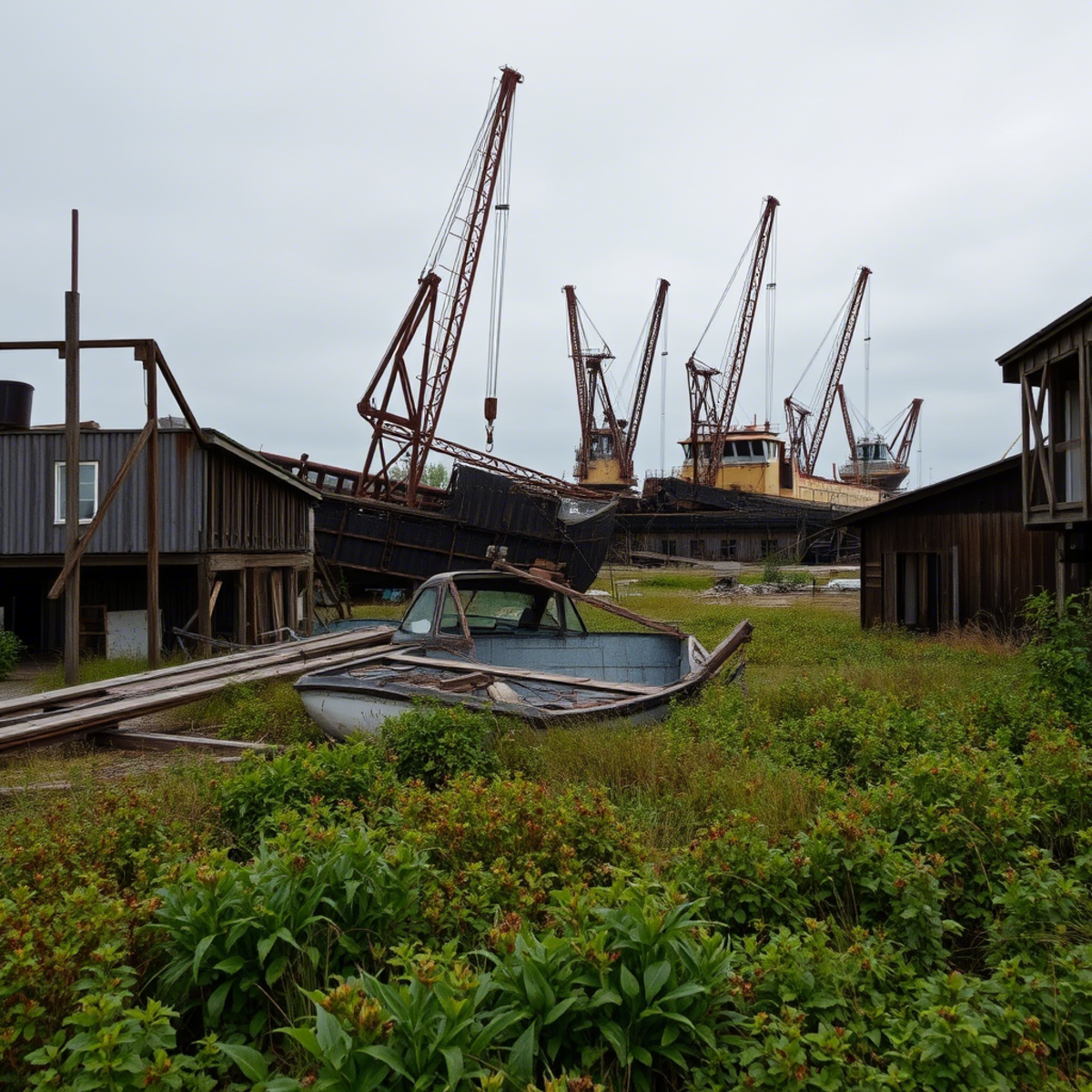Deep within Germany’s industrial heartland, along the banks of the Rhine River, once stood a maritime giant that helped define the nation’s shipbuilding legacy. The Triton shipyard, known locally as Triton-Werft, represented more than just an industrial facility—it was a testament to German engineering prowess, a symbol of post-war reconstruction, and ultimately, a casualty of the changing global economy.
Today, where massive cranes once lifted steel hulls and the sounds of industrial progress echoed across the water, only memories remain. The abandoned Triton shipyard has been demolished, its legacy preserved only in photographs, historical records, and the stories of those who worked within its walls. This is the story of rise, decline, and the ultimate fate of one of Germany’s forgotten maritime monuments.
The Birth of a Maritime Giant
The Triton shipyard emerged during a pivotal period in German industrial history, when the nation was rebuilding its maritime capabilities after World War II. Located in the Duisburg area, one of Europe’s largest inland ports, the facility was strategically positioned to take advantage of the Rhine River’s extensive shipping network.
Strategic Location and Design: The shipyard’s location was no accident. Duisburg, situated at the confluence of the Rhine and Ruhr rivers, served as a natural hub for Germany’s industrial activity. The area’s established infrastructure, skilled workforce, and direct access to international shipping routes made it an ideal location for maritime construction and repair operations.
Early Operations and Specialization: Unlike many German shipyards that focused primarily on ocean-going vessels, Triton-Werft specialized in inland waterway ships, barges, and industrial vessels designed for river transport. This specialization reflected the practical needs of Germany’s post-war economy, which relied heavily on efficient inland transportation for raw materials and finished goods.
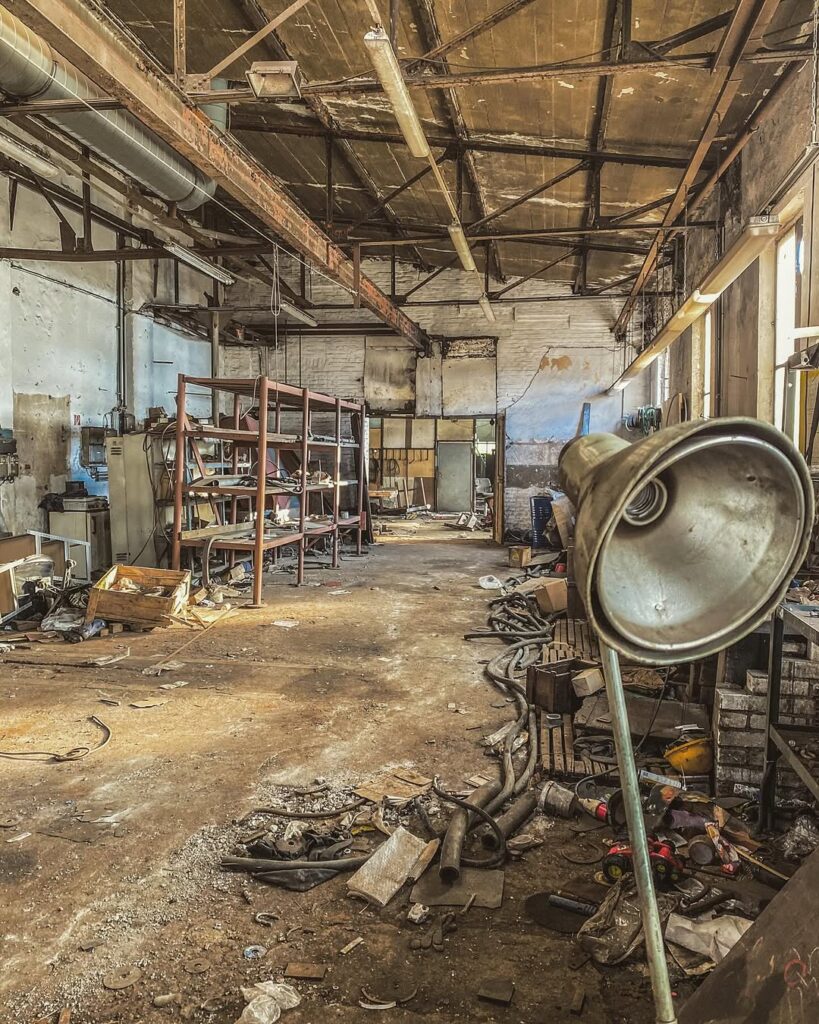
Industrial Architecture and Layout
The Triton shipyard represented a masterpiece of mid-20th century industrial architecture, designed with both functionality and efficiency in mind. The facility’s layout reflected the systematic approach that characterized German industrial design of the era.
Main Construction Halls: The shipyard featured several massive construction halls, each designed to accommodate different types of vessels. These structures, built with reinforced concrete and steel frameworks, could house multiple projects simultaneously. The main assembly hall stretched over 200 meters in length, allowing for the construction of large river barges and industrial vessels.
Crane Systems and Infrastructure: Heavy-duty overhead cranes dominated the facility’s skyline, with lifting capacities ranging from 25 to 100 tons. These cranes, manufactured by German engineering companies, could move massive steel sections and completed hull sections with precision. The crane systems were integrated into the building structure, allowing for efficient material handling throughout the construction process.
Specialized Workshops: Beyond the main construction areas, the shipyard housed numerous specialized workshops for welding, machining, electrical work, and finishing. Each workshop was equipped with state-of-the-art machinery for its time, including precision cutting tools, hydraulic presses, and specialized welding equipment designed for maritime applications.
The Golden Years: Peak Operations and Major Projects
During its operational peak, the Triton shipyard employed hundreds of skilled workers and contributed significantly to Germany’s inland shipping industry. The facility’s output included a diverse range of vessels that served various industrial and commercial purposes.
Commercial Barges and Cargo Vessels: The shipyard’s primary output consisted of commercial barges designed for Rhine River transport. These vessels, ranging from 80 to 135 meters in length, were engineered to carry bulk commodities including coal, grain, chemicals, and manufactured goods. The barges featured innovative design elements that maximized cargo capacity while maintaining structural integrity.
Specialized Industrial Vessels: Beyond standard cargo barges, Triton-Werft produced specialized vessels for specific industrial applications. These included floating cranes, dredging equipment, and floating workshops designed to support port operations throughout the Rhine system. Each vessel was custom-designed to meet specific operational requirements, showcasing the shipyard’s engineering capabilities.
Innovation in River Transport: The shipyard pioneered several innovations in inland waterway transport, including improved hull designs for shallow-water navigation and enhanced cargo handling systems. These innovations helped establish German inland shipping as among the most efficient in Europe, contributing to the nation’s economic competitiveness.
Workforce and Community Impact
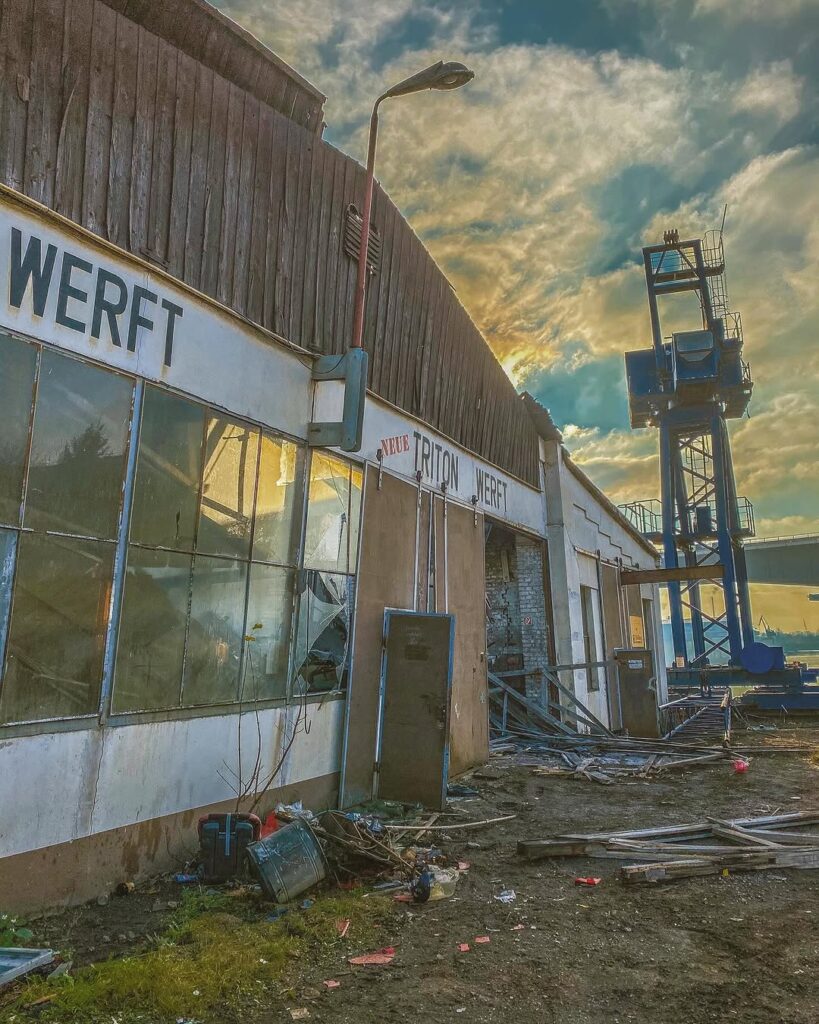
The Triton shipyard was more than an industrial facility—it was the economic heart of its surrounding community. The workforce, consisting of skilled craftsmen, engineers, and support staff, represented generations of maritime expertise.
Skilled Craftsmen and Traditions: The shipyard employed master shipbuilders whose skills had been passed down through generations. These craftsmen combined traditional techniques with modern technology, creating vessels that balanced time-tested construction methods with contemporary engineering requirements. Apprenticeship programs ensured the continuation of these specialized skills.
Community Integration: The facility’s impact extended far beyond its gates. Local businesses, from restaurants to tool suppliers, depended on the shipyard for their livelihood. The facility sponsored local sports teams, cultural events, and technical education programs, creating deep ties with the surrounding community.
Economic Significance: At its peak, the Triton shipyard contributed millions of Deutsche Marks annually to the local economy through direct employment, supplier relationships, and tax revenues. The facility’s payroll supported thousands of families and helped maintain the area’s economic stability during challenging periods.
Technological Evolution and Modernization Efforts
As the maritime industry evolved, the Triton shipyard attempted to adapt its operations to meet changing market demands and technological requirements. These modernization efforts reflected broader trends in German industrial development.
Automation and Efficiency Improvements: During the 1970s and 1980s, the shipyard invested in automated welding systems, computer-controlled cutting equipment, and improved material handling systems. These upgrades aimed to increase productivity and reduce construction times while maintaining quality standards.
Environmental Considerations: Growing environmental awareness led to the implementation of waste management systems, water treatment facilities, and emission control measures. The shipyard adapted its operations to meet increasingly stringent environmental regulations while continuing production activities.
Design and Engineering Advances: The facility’s engineering team embraced computer-aided design systems and advanced materials science to improve vessel performance. These technological advances allowed for the creation of more efficient hull designs and improved structural systems.
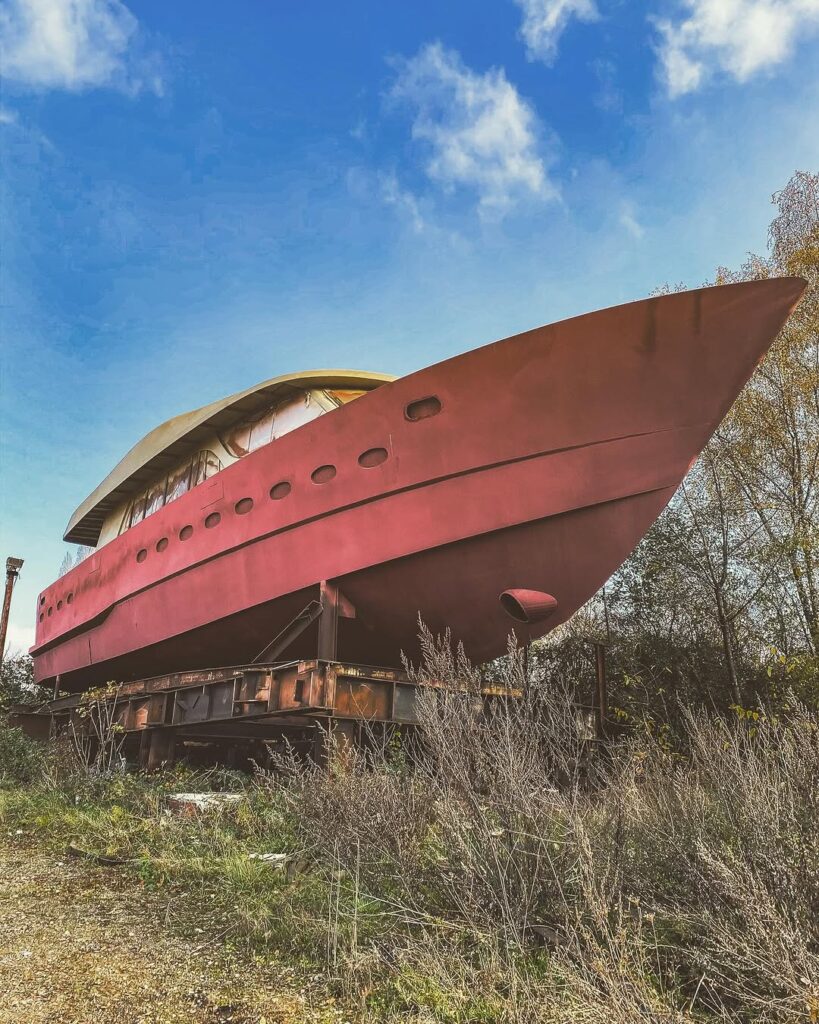
Economic Pressures and Declining Demand
The beginning of the end for Triton-Werft came with fundamental changes in the global economy and shipping industry. Multiple factors combined to create an increasingly challenging operating environment.
International Competition: The rise of shipbuilding industries in Asia, particularly in South Korea and China, created intense price competition. These facilities, with lower labor costs and government subsidies, could produce similar vessels at significantly reduced prices, making it difficult for German shipyards to compete on cost alone.
Changing Transportation Patterns: The growth of containerized shipping and improved road transport systems reduced demand for traditional river barges. Many companies shifted to alternative transportation methods, decreasing the market for the shipyard’s primary products.
Economic Restructuring: Germany’s economic transformation following reunification created new priorities and investment patterns. Government support for traditional industries decreased as resources were redirected toward emerging technologies and services.
The Decline: Warning Signs and Attempts at Revival
The Triton shipyard’s decline was not sudden but rather a gradual process marked by several attempts at revival and adaptation. Understanding this period provides insight into the challenges facing traditional industrial facilities in a changing economy.
Reduced Order Book: By the 1990s, the shipyard’s order book had shrunk significantly. Projects became fewer and farther between, leading to periods of reduced activity and workforce reductions. The facility increasingly relied on repair and maintenance work rather than new construction.
Diversification Attempts: Management attempted to diversify operations by pursuing contracts for offshore structures, specialized marine equipment, and even non-maritime industrial projects. While some of these efforts showed promise, they were insufficient to offset the decline in traditional shipbuilding demand.
Investment Challenges: The facility required significant capital investment to modernize equipment and facilities. However, uncertain market conditions and reduced profitability made it difficult to secure necessary financing for comprehensive upgrades.
Final Years and Closure
The final years of the Triton shipyard were marked by a series of desperate attempts to maintain operations and preserve jobs. Despite these efforts, economic realities ultimately forced the facility’s closure.
Last Major Projects: The shipyard’s final major projects included a series of river barges for European shipping companies and refurbishment work on existing vessels. These projects, while technically successful, were insufficient to ensure the facility’s long-term viability.
Workforce Reductions: As orders declined, the shipyard was forced to implement successive rounds of layoffs. The workforce, which had once numbered in the hundreds, was reduced to a skeleton crew responsible for maintaining essential operations and completing outstanding contracts.
Closure Announcement: The official closure announcement came after years of speculation and uncertainty. Despite efforts by workers, unions, and local government to find alternative solutions, the shipyard’s owners determined that continued operations were no longer economically viable.
Demolition and Site Transformation
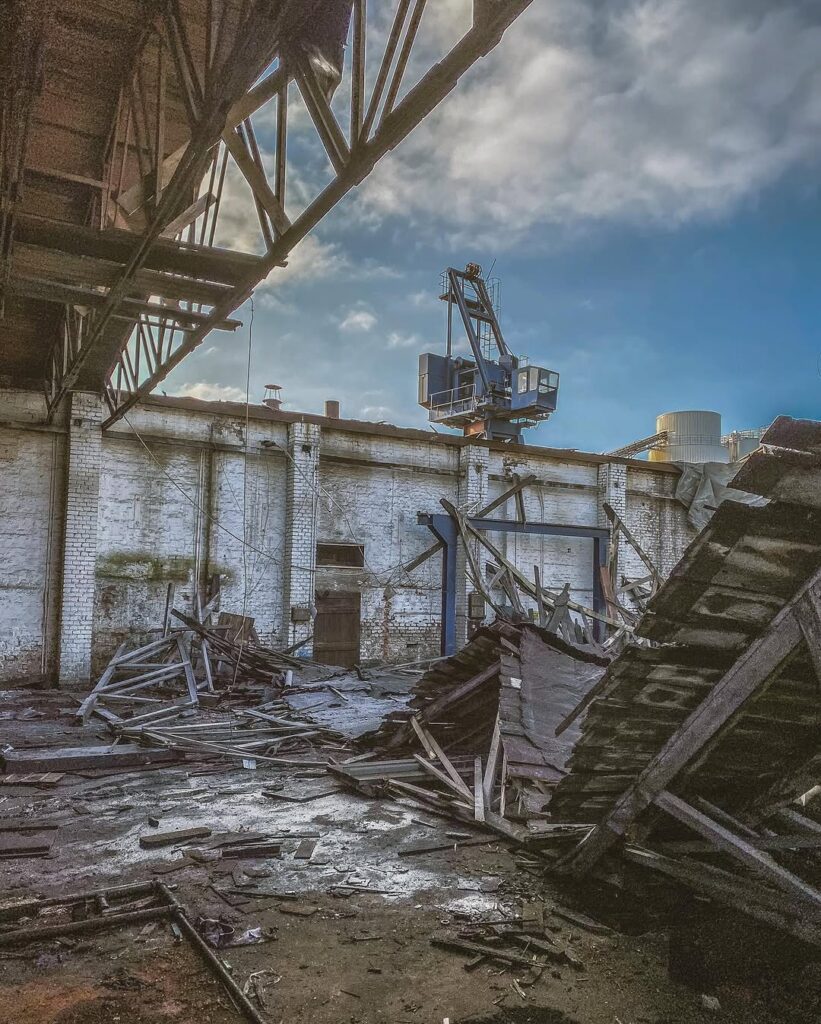
The demolition of the Triton shipyard marked the end of an era in German industrial history. The process, while necessary for site redevelopment, also represented the loss of significant industrial heritage.
Demolition Process: The demolition process required careful planning due to the site’s industrial history and environmental considerations. Specialized contractors removed hazardous materials, including asbestos and industrial chemicals, before beginning structural demolition. The massive cranes and construction halls, which had defined the facility’s skyline, were systematically dismantled over several months.
Environmental Remediation: After the end of the Triton shipyard, the site was transformed into a truck parking lot for Duisport, but this transformation required extensive environmental remediation. Soil contamination from decades of industrial activity needed to be addressed before the site could be safely repurposed.
Salvage and Recycling: Much of the shipyard’s steel infrastructure was salvaged and recycled, reflecting Germany’s commitment to sustainable resource management. Specialized equipment, including some of the smaller cranes and machine tools, was sold to other facilities or preserved for industrial museums.
Site Redevelopment and Current Status
Today, the former Triton shipyard site serves a different purpose within the Duisburg port complex, demonstrating how industrial sites can be adapted to meet changing economic needs.
Current Use as Logistics Hub: The former shipyard site now functions as a truck parking lot for Duisport, supporting the port’s role as a major logistics hub. This transformation reflects the evolution of the Duisburg area from heavy industry toward logistics and distribution services.
Integration with Port Operations: The site’s strategic location continues to provide value, though in a different capacity than originally intended. Its proximity to river transport, rail connections, and highway access makes it ideal for modern logistics operations.
Economic Impact of Redevelopment: While the new use of the site provides economic benefits, it employs far fewer people than the original shipyard. This transformation reflects broader trends in industrial automation and the shift toward service-based economies.
Cultural and Historical Significance
The Triton shipyard’s story extends beyond economics and industry—it represents important aspects of German cultural and social history that deserve preservation and recognition.
Industrial Heritage Value: The shipyard represented a significant example of post-war German industrial development and the nation’s maritime traditions. Its specialized focus on inland waterway vessels reflected Germany’s unique geographic and economic circumstances.
Photographic Documentation: Before demolition, photographers and historians documented the facility’s architecture and equipment. These photographs now serve as valuable historical records, preserving the memory of the shipyard’s impressive industrial infrastructure.
Oral History Collection: Interviews with former workers, managers, and community members have created an important oral history collection. These accounts provide personal perspectives on the shipyard’s operations, work culture, and community impact.
Lessons Learned and Broader Implications
The story of the Triton shipyard offers important lessons about industrial development, economic change, and the challenges facing traditional manufacturing in a globalized economy.
Adaptation Challenges: The shipyard’s experience demonstrates the difficulties traditional industries face when attempting to adapt to rapidly changing market conditions. Despite efforts at diversification and modernization, the facility ultimately could not overcome fundamental economic pressures.
Community Impact of Industrial Closure: The shipyard’s closure highlighted the vulnerability of communities dependent on single large employers. The loss of hundreds of jobs and associated economic activity created long-term challenges for the surrounding area.
Preservation of Industrial Heritage: The complete demolition of the facility represents a lost opportunity for industrial heritage preservation. Other similar sites in Germany have been successfully converted to museums or cultural centers, preserving important aspects of industrial history.
Comparison with Other German Shipyards

The Triton shipyard’s fate was not unique among German maritime facilities. Comparing its experience with other shipyards provides broader context for understanding the industry’s challenges.
Regional Variations: While Triton-Werft focused on inland waterway vessels, other German shipyards specialized in different market segments. Some facilities that focused on high-value specialized vessels or offshore structures managed to survive and even thrive, while others faced similar closure pressures.
Successful Adaptations: Several German shipyards successfully adapted to changing market conditions through specialization in luxury vessels, offshore wind installations, or naval contracts. These examples demonstrate that survival was possible with appropriate market positioning and investment.
Government Support Variations: The level of government support varied significantly between different shipyard closures. Some facilities received substantial public investment for modernization or workforce retraining, while others, like Triton-Werft, faced closure with minimal intervention.
Environmental Legacy and Site Restoration
The environmental aspects of the Triton shipyard’s closure and site remediation provide important insights into industrial environmental management and restoration practices.
Contamination Assessment: Decades of shipbuilding activities left various forms of environmental contamination, including heavy metals, petroleum products, and industrial chemicals. Comprehensive environmental assessments were required before site redevelopment could proceed.
Remediation Technologies: The site cleanup employed advanced environmental remediation technologies, including soil washing, groundwater treatment, and selective excavation. These efforts demonstrated Germany’s commitment to environmental restoration and responsible site management.
Long-term Monitoring: Even after active remediation, the site requires ongoing environmental monitoring to ensure that contamination levels remain within acceptable limits. This long-term commitment reflects the serious approach to environmental stewardship in industrial site management.
Impact on German Maritime Industry
The closure of facilities like the Triton shipyard had broader implications for Germany’s maritime industry
![]()
